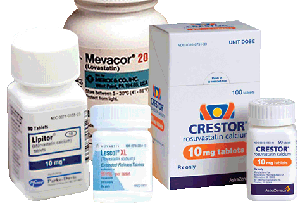 Patients suffering with Type 2 diabetes are commonly prescribed a combination of medications designed to lower LDL cholesterol, or bad cholesterol, and their triglyceride levels while simultaneously raising HDL cholesterol, or good cholesterol. It has been accepted by the medical community for quite a while that this combination of medication mitigates the effects of diabetes by lowering the risk of heart attacks.
Patients suffering with Type 2 diabetes are commonly prescribed a combination of medications designed to lower LDL cholesterol, or bad cholesterol, and their triglyceride levels while simultaneously raising HDL cholesterol, or good cholesterol. It has been accepted by the medical community for quite a while that this combination of medication mitigates the effects of diabetes by lowering the risk of heart attacks.
However, that knowledge has been challenged recently in the New England Journal of Medicine. The combination of medication was recently evaluated for effectiveness by a Food and Drug Administration panel and three physicians who served on the panel say that these drugs have not demonstrated any effectiveness in lowering the risk of heart attacks in Type 2 diabetics who have higher levels of cholesterol.
The drugs are called fibrates and doctors prescribe them to raise HDL cholesterol levels while lowering blood triglyceride levels.
Fibrates are commonly prescribed to diabetics as companion medications to statins — drugs that lower levels of LDL cholesterol. There are three fibrates approved for use in the United States by the FDA, including gemfibrozil (Lopid), fenofibrate (Tricor) and fenofibric acid (Trillipix). The sales of these three drugs run into the billions of dollars, reflecting their popularity with physicians prescribing them for patients with diabetes or obesity.
“There have been few studies regarding the clinical outcome efficacy of fibrates,” said Sanjay Kaul, MD. Kaul is one of the doctors challenging the hypothesis that fibrates reduce risk of heart attacks and is director of the Cardiology Fellowship Training Program at Cedars-Sinai Heart Institute. According to Kaul, “Thousands and thousands of Americans take fibrates every day but so far, there are no long-term studies showing that fibrates lower cardiovascular risk or improve survival among diabetes patients who are also on statins.”
The doctors have suggested that more studies be performed to determine the efficacy of fibrates. However, they did recommend that doctors continue to prescribe the fibrate-statin combination of medication to diabetics who are at elevated risk for heart attacks, but only after the patients have been treated with statins to establish control of LDL cholesterol levels.
High blood triglyceride levels have been demonstrated to be a risk factor for heart disease and stroke as well as atherosclerosis, or hardening of the arteries. Triglyceride levels are increased by diets heavy in carbohydrates, such as those where carbohydrates make up 60 percent or more of caloric intake, especially in patients who already exhibit insulin resistance. Patients with high triglyceride levels can reduce those levels with exercise and by consuming omega-3 fatty acids from sources such as fish and flax seed oil. While United States residents are recommended to eat 3 grams of omega-3 fatty acids every day, most people do not consume that amount. Consumption of omega-3 fatty acids should also be balanced with consumption of omega-6 acids.
Clinical trials have shown that although treatment with fibrates alone does reduce the risk of non-fatal heart attacks, it does not reduce the risk of mortality. Fibrates have been used since the 1930s but their mechanism of reducing LDL cholesterol was not fully understood until the 1990s, when it was shown that they activate a type of cellular receptor called PPARs that regulate carbohydrate and fat metabolism. When activated, PPARs actually alter cellular DNA to increase fat metabolism, or the body’s use of stores of body fat to provide energy.